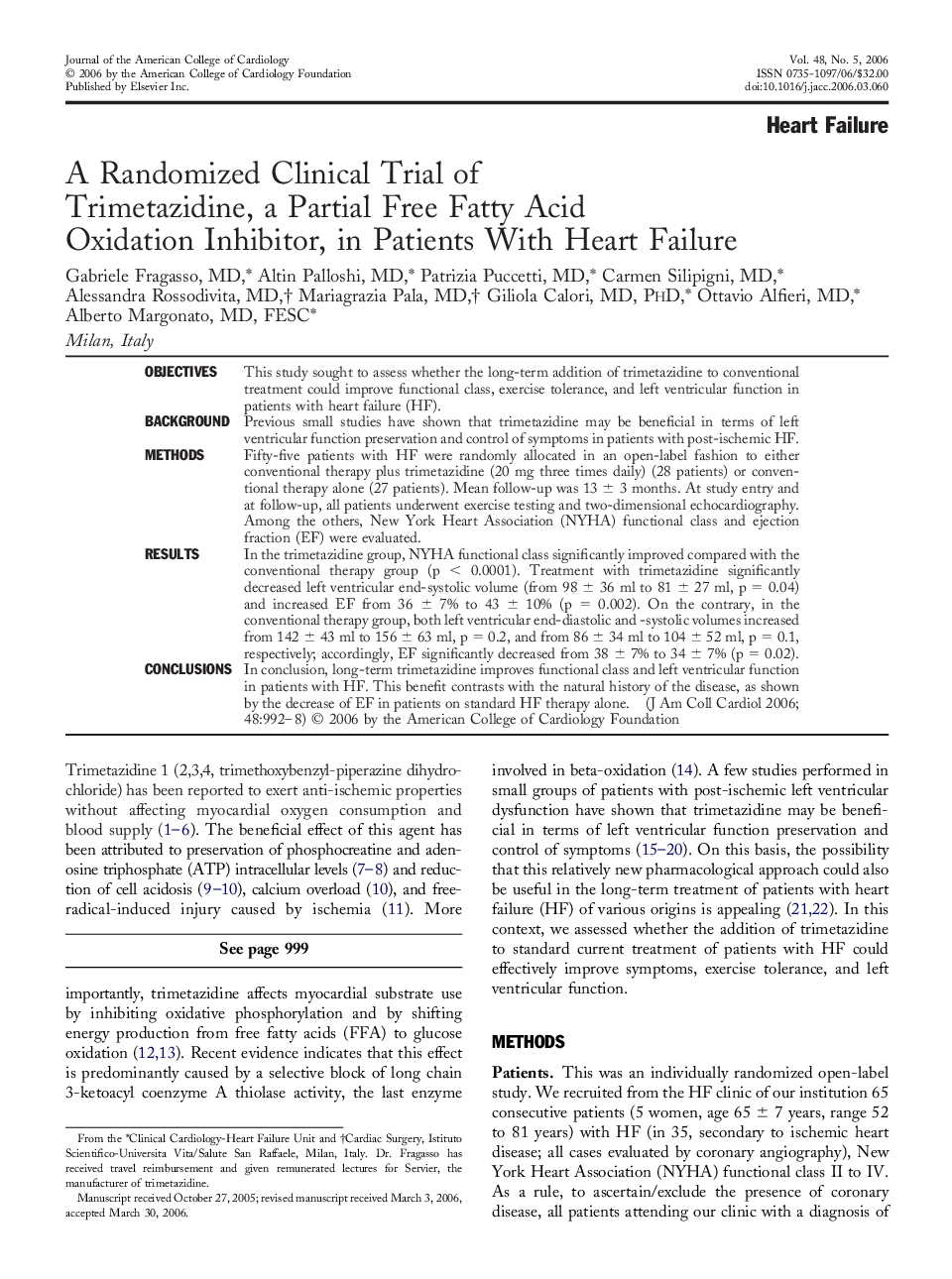| Article ID | Journal | Published Year | Pages | File Type |
|---|---|---|---|---|
| 2953665 | Journal of the American College of Cardiology | 2006 | 7 Pages |
ObjectivesThis study sought to assess whether the long-term addition of trimetazidine to conventional treatment could improve functional class, exercise tolerance, and left ventricular function in patients with heart failure (HF).BackgroundPrevious small studies have shown that trimetazidine may be beneficial in terms of left ventricular function preservation and control of symptoms in patients with post-ischemic HF.MethodsFifty-five patients with HF were randomly allocated in an open-label fashion to either conventional therapy plus trimetazidine (20 mg three times daily) (28 patients) or conventional therapy alone (27 patients). Mean follow-up was 13 ± 3 months. At study entry and at follow-up, all patients underwent exercise testing and two-dimensional echocardiography. Among the others, New York Heart Association (NYHA) functional class and ejection fraction (EF) were evaluated.ResultsIn the trimetazidine group, NYHA functional class significantly improved compared with the conventional therapy group (p < 0.0001). Treatment with trimetazidine significantly decreased left ventricular end-systolic volume (from 98 ± 36 ml to 81 ± 27 ml, p = 0.04) and increased EF from 36 ± 7% to 43 ± 10% (p = 0.002). On the contrary, in the conventional therapy group, both left ventricular end-diastolic and -systolic volumes increased from 142 ± 43 ml to 156 ± 63 ml, p = 0.2, and from 86 ± 34 ml to 104 ± 52 ml, p = 0.1, respectively; accordingly, EF significantly decreased from 38 ± 7% to 34 ± 7% (p = 0.02).ConclusionsIn conclusion, long-term trimetazidine improves functional class and left ventricular function in patients with HF. This benefit contrasts with the natural history of the disease, as shown by the decrease of EF in patients on standard HF therapy alone.
